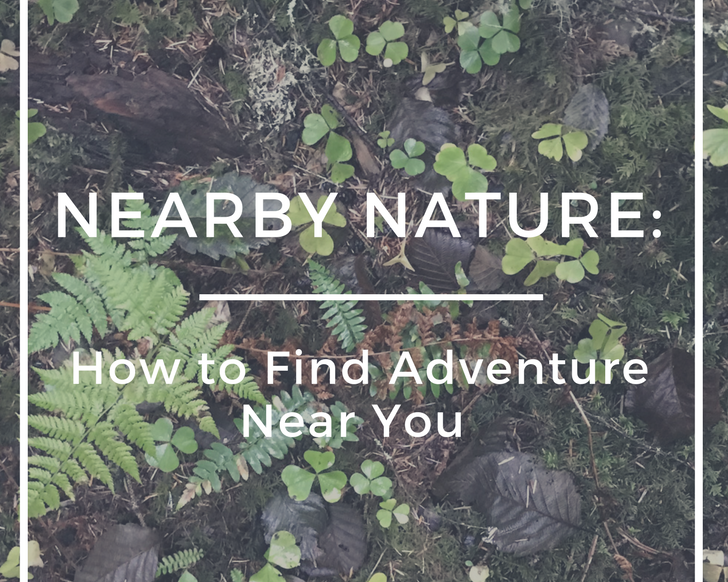Explorer. Naturalist. Writer.
He was one of the first Europeans to explore the glaciers, bays, and mountains of Alaska’s southeast coast, and even had a glacier named after him. He wrote of these Alaskan adventures in a book, including beautiful poetry and vivid descriptions of the landscapes he discovered, and telling of his close brush with death when he nearly tumbled over the edge of a towering mountainside cliff.
No, I’m not talking about John Muir.
Though that paragraph could almost describe Muir, as he did explore the southeast Alaskan coast in 1879 and 1880, these statements describe Samuel Hall Young, who was lucky enough to travel alongside Muir on those Alaskan voyages.
S. Hall Young, Minister and Adventurer
Samuel Hall Young, or S. Hall Young as he was better known, was a young Presbyterian minister “very green and very fresh” from seminary in 1879 and sent to Fort Wrangell, Alaska, to minister to the Tlingit and other indigenous peoples of the region. That summer, a steamship docked in Fort Wrangell, carrying “Professor Muir - the Naturalist” along with three seasoned ministers to council Young in beginning his work there.
Young was immediately drawn to Muir, and the two became fast friends. They held similar ambitions to travel up the coast - Young to minister to the native villages, and Muir to survey the mountains and glaciers - so they combined ventures, commissioned a steamship, and set off on their adventure.
Exploring with Muir
I’ve often wondered what it would be like to travel with John Muir; to speak with him about the wonders of nature or tramp alongside him into the mountains. Young got to do just that - and thankfully, he wrote about it all in his book, Alaska Days with John Muir. So, though we can’t travel along with John Muir ourselves, we actually can get a taste of what it would have been like to hike in the shadow of the great naturalist by reading about it in Young’s book.
Muir wrote about these adventures in his book, Travels in Alaska. It is filled with stories of mountain-climbing adventures, glacial discoveries and explorations, thrilling close calls, as well as meetings with the indigenous peoples of the Alaska coast and beautiful depictions of the larger-than-life landscapes there.
Though S. Hall Young’s book about the same expeditions is significantly shorter, it is equally enthralling, and absolutely deserving of far more attention than the near-obscurity in which it languishes now.
Young was a skilled storyteller himself, relating in harrowing detail the dramatic mountain-climbing incident when Young nearly fell off a towering mountain-top cliff and Muir used his own teeth to rescue him from a grisly death. He also wrote about his intrepid pup, Stickeen, whom Muir had later made famous with his beloved children’s book about the loyal, adventurous little black dog. Young even included a few of his own lovely poems inspired by these expeditions with Muir.
These voyages up the Alaska coast were the first of their sort; Muir and Young were the first Europeans to explore much of the territory they covered in these two trips between 1879 and ‘80, and they also conducted the first census of the native Alaskan villages along the way. They even had the distinct privilege of naming some of the mountains and glaciers they encountered, and though Muir named a glacier in Young’s honor, they later learned that the name had been superseded by another and hadn’t stuck.
But some of my favorite passages of Young’s book - and the reason I picked up the book in the first place - are those in which he gives us a rare glimpse into the true character of John Muir, himself.
Muir, the Man.
Young was first introduced to Muir as “Professor Muir - the Naturalist.” Young describes him as “a lean, sinewy man of forty, with waving, reddish-brown hair and beard, and shoulders slightly stooped.” He tells of Muir, 10 years his elder, climbing mountains with the surefootedness of a “Big Horn of the Rockies,” and the remarkable speed of a swift mountain goat.
He tells us how Muir would slip into a broad Scottish accent when especially happy or excited by the prospect of a great mountain-climb, such as when Muir told Young that the day’s climb would yield “the sicht o’ yer life,” and “that’ll be o’ mair use till ye than a’ the gowd o’ Cassair.”
Young wrote that, even with how wonderfully Muir wrote about nature, he was “one of those rare souls who talk better than they write… somehow a glacier never seemed cold when John Muir was talking about it.”
We even get some insight into Muir’s spiritual side; as Young’s purpose in the two expeditions was missional, to carry the Gospel to the Tlingit and other indigenous peoples along the Southeast Alaskan coast for the first time, he also enlightens the reader about Muir’s own devout faith. Young wrote that Muir viewed all of nature as an immense and intricate design, deliberately created by the Living God “not merely for His own delight, but for the delectation and instruction of His human children.” (He believed that nature itself is like a deeply poetic book, its lyrics pointing us to the God who created it.)
Young quickly came to revere Muir as a mentor and friend, describing him as a kind and passionate man, full of deep convictions and deeply in love with the wild places he explored. The brotherly love between these two students of nature is palpable - whether you’re reading Muir’s telling or Young’s.
Their friendship continued long after the two expeditions they shared in Alaska; Young visited Muir’s home in California on a couple of occasions, and they even met up by coincidence in Alaska not once, but twice more over the decades following. They also exchanged many letters over the years about their mutual love of nature and its study. Tragically though, Young tells us that these letters were all lost in a steamship accident.
Seize the Adventure with Muir, yourself.
I picked up a copy of Alaska Days wanting to learn more about John Muir, but what I discovered in the end was another fascinating naturalist, one who seems to have been sadly obscured by time and all but forgotten - in Muir’s shadow. The character of S. Hall Young is just about as rich and intriguing as Muir himself, if you ask me, and I’m definitely adding his other written works to my list of books to read, right alongside those beloved titles by John Muir. If you’re looking for a book that will take you on an adventure, sweep you away with its rich narrative and wild landscapes, make you laugh and maybe even make you cry, then Samuel Hall Young’s Alaska Days with John Muir deserves a spot on your reading list.
P.S. - if I’ve piqued your interested enough to seek a copy of Alaska Days with John Muir to read for yourself (yay!), then you should know two things:
First, it is out of copyright and in the public domain, and there are several not-so-great editions available from these wonderful independent booksellers; I’ve ordered a couple and will update if I find a well-made edition, but in the meantime, be forewarned that you’re likely to find poor formatting and/or missing illustrations.
Secondly, just like much of Muir’s writing, Alaska Days is a product of its time, and does contain some non-PC views of the native peoples of Alaska. Not terribly racist or demeaning, but also not the way we’d likely talk about people today.
And third (bonus!), it’s still absolutely worth it. It’s a short book and a fairly quick read, but so rich and so worthwhile. Get yourself a copy here.
↟↟↟
This article contains some affiliate links. When you make a purchase through my link, I'll receive a small commission at no extra cost to you. Your support helps me keep posts like this coming!
Enjoy this post? Want more?
Join my Outsiders email list to keep up with new blog posts, adventure tips, and get the best deals on nature-inspired gear in the Dear Summit Shop!
you might also like:





